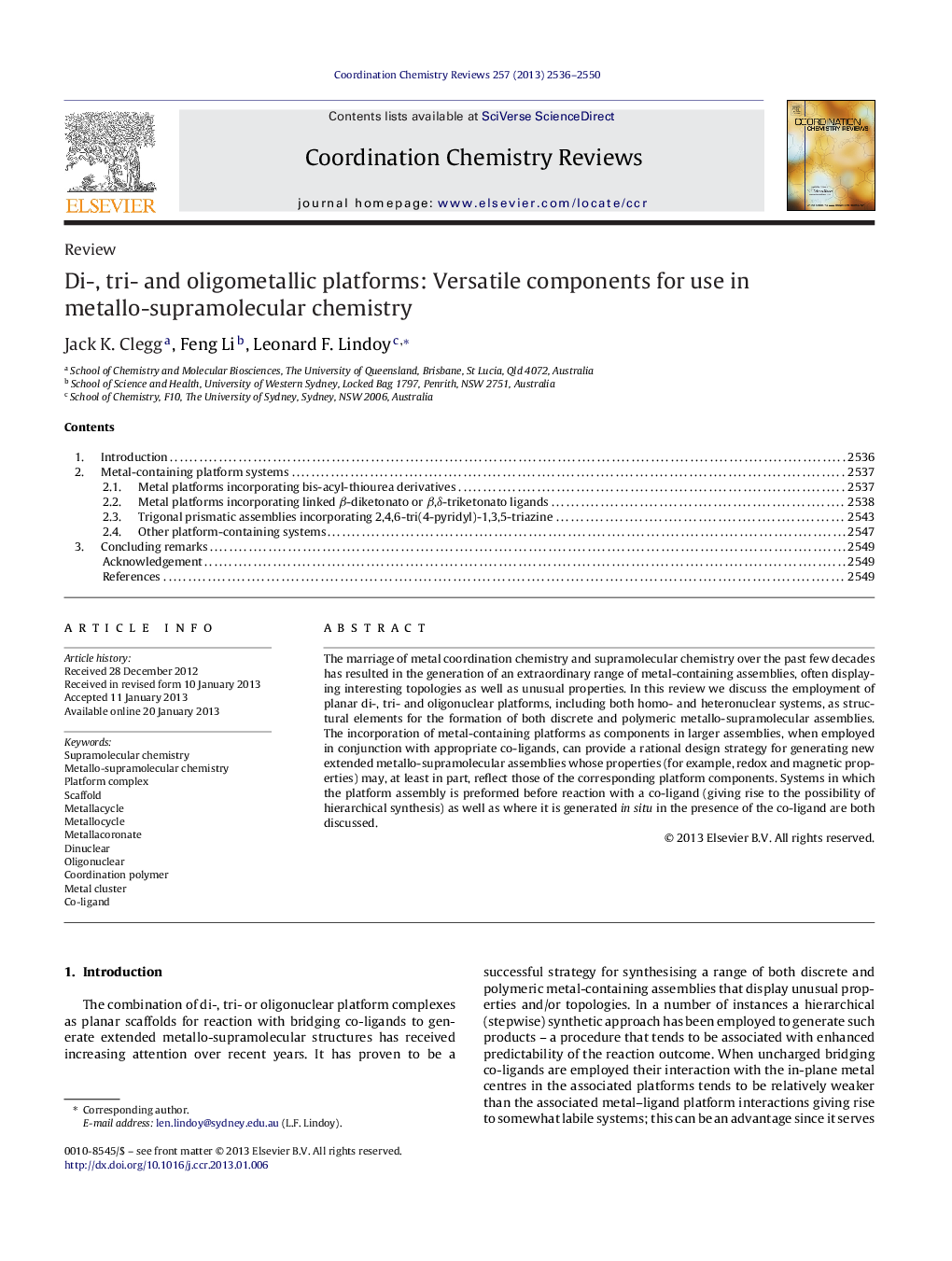| Article ID | Journal | Published Year | Pages | File Type |
|---|---|---|---|---|
| 1299567 | Coordination Chemistry Reviews | 2013 | 15 Pages |
The marriage of metal coordination chemistry and supramolecular chemistry over the past few decades has resulted in the generation of an extraordinary range of metal-containing assemblies, often displaying interesting topologies as well as unusual properties. In this review we discuss the employment of planar di-, tri- and oligonuclear platforms, including both homo- and heteronuclear systems, as structural elements for the formation of both discrete and polymeric metallo-supramolecular assemblies. The incorporation of metal-containing platforms as components in larger assemblies, when employed in conjunction with appropriate co-ligands, can provide a rational design strategy for generating new extended metallo-supramolecular assemblies whose properties (for example, redox and magnetic properties) may, at least in part, reflect those of the corresponding platform components. Systems in which the platform assembly is preformed before reaction with a co-ligand (giving rise to the possibility of hierarchical synthesis) as well as where it is generated in situ in the presence of the co-ligand are both discussed.
Graphical abstractFigure optionsDownload full-size imageDownload high-quality image (157 K)Download as PowerPoint slideHighlights► Planar di-, tri- and oligonuclear platforms are versatile building blocks for use in metallo-supramolecular chemistry. ► With appropriate co-ligands, their use can provide a rational strategy for generating extended assemblies. ► Systems in which the platform assembly is preformed prior to reaction with a co-ligand allow the possibility of hierarchical synthesis. ► Both discrete and polymeric metallo-supramolecular assemblies can result.
